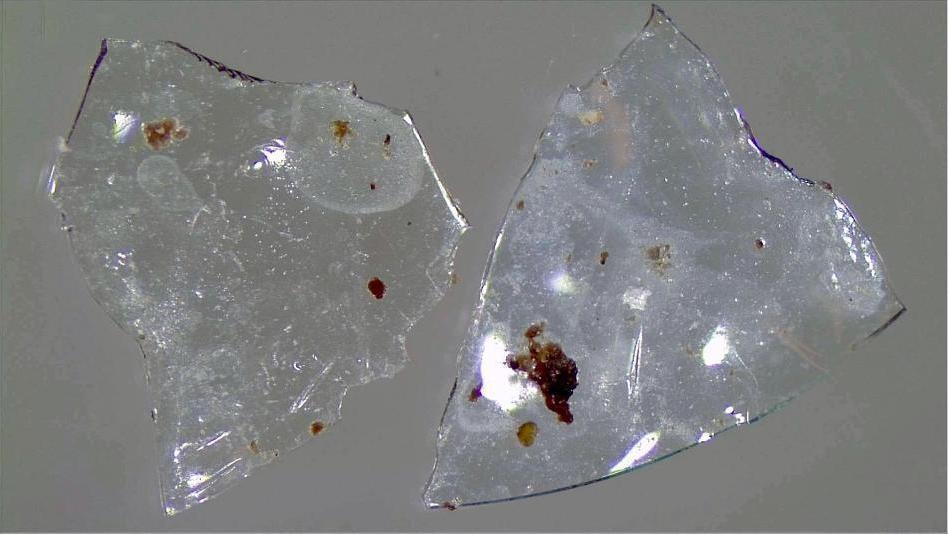Aug 20 2018
A number of people depend upon contact lenses to enhance their vision. But these sight-correcting devices do not last a lifetime - some are destined for a single day's use - and they are sooner or later disposed of in numerous ways. Currently, researchers are stating that disposing of these lenses down the drain could be adding to microplastic pollution in waterways.
 Contact lenses recovered from treated sewage sludge could harm the environment. (Image credit: Charles Rolsky)
Contact lenses recovered from treated sewage sludge could harm the environment. (Image credit: Charles Rolsky)
The scientists are presenting their results at the 256th National Meeting & Exposition of the American Chemical Society (ACS). ACS, the world's largest scientific society, is hosting the meeting. It features over 10,000 presentations on a broad range of science subjects.
The motivation for this research came from personal experience. "I had worn glasses and contact lenses for most of my adult life," Rolf Halden, Ph.D., says. "But I started to wonder, has anyone done research on what happens to these plastic lenses?" His team had already been involved in plastic pollution research, and it was a shocking wake-up call when they could not locate any studies on what happens to contact lenses after use.
"We began looking into the U.S. market and conducted a survey of contact lens wearers. We found that 15 to 20 percent of contact wearers are flushing the lenses down the sink or toilet," says Charlie Rolsky, a Ph.D. student who is presenting the research. Halden, Rolsky and a third member of the team, Varun Kelkar, are at the Biodesign Institute's Center for Environmental Health Engineering at Arizona State University (ASU). "This is a pretty large number, considering roughly 45 million people in the U.S. alone wear contact lenses."
Lenses that are flushed down the drain eventually end up in wastewater treatment plants. The team approximates that annually anywhere from 6 to10 metric tons of plastic lenses wind up in wastewater in the U.S. alone. Contacts are denser than water, which means they sink, and this could in due course pose a threat to marine life, particularly bottom feeders that may swallow the contacts, Halden says.
Examining what happens to these lenses is a tough task for several reasons. First, contact lenses are transparent, which makes them hard to be spotted in the complicated setting of a wastewater treatment plant. Moreover, the plastics used in contact lenses are different from other plastic waste, such as polypropylene, which can be found in all items from textiles to car batteries. Contact lenses are instead commonly manufactured with a combination of silicones, poly(methylmethacrylate), and fluoropolymers to develop a softer material that enables oxygen to pass through the lens to the eye. Therefore, it is unclear how wastewater treatment impacts contacts.
These differences make it difficult to process contact lenses in wastewater plants. To help address their outcome during treatment, the scientists exposed five polymers detected in many manufacturers' contact lenses to aerobic and anaerobic microorganisms present at wastewater treatment plants for varying times and performed Raman spectroscopy to examine them. "We found that there were noticeable changes in the bonds of the contact lenses after long-term treatment with the plant's microbes," says Kelkar. The team came to the conclusion that microbes in the wastewater treatment facility, in fact, changed the surface of the contact lenses, weakening the plastic polymer bonds.
"When the plastic loses some of its structural strength, it will break down physically. This leads to smaller plastic particles which would ultimately lead to the formation of microplastics," Kelkar says. Aquatic organisms can assume microplastics are food and since plastics are indigestible, this radically impacts the marine animals' digestive system. These animals belong to a long food chain. Some, in the end, find their way to the human food supply, which could result in undesirable human exposures to plastic contaminants and pollutants that adhere to the surfaces of the plastics.
By drawing attention to this first-of-its-kind research, the team is optimistic that industry will take note and at least add a label on the packaging explaining how to correctly dispose of contact lenses, which is by combining them with other solid waste. Halden remarks, "Ultimately, we hope that manufacturers will conduct more research on how the lenses impact aquatic life and how fast the lenses degrade in a marine environment."